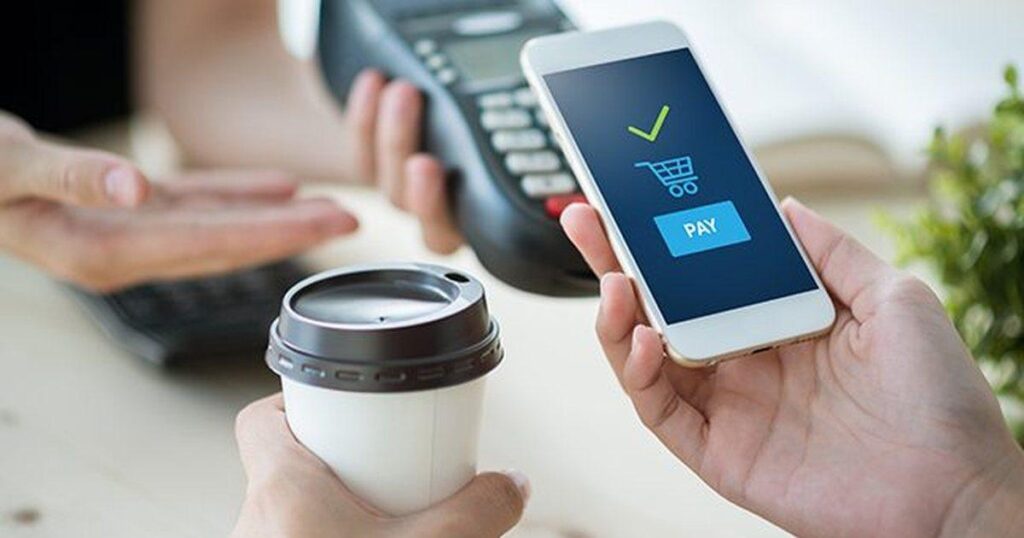M-Commerce App Development means making apps for shopping on phones. These apps let people buy things and check their accounts using smartphones. They use special tech to make buying stuff on your phone easy and safe.
Want to learn how to make great shopping apps? Our “Ultimate Guide to M-Commerce App Development” can help. It shows you everything from start to finish. Whether you make apps or own a business, this guide is for you.
This guide tells you all about making shopping apps for phones. It talks about how to design them, keep them safe, and tell people about them. After reading this, you’ll know how to make an app that people will love to use for shopping.
What is “Developpez Votre Application M-Commerce”?
“Developpez Votre Application M-Commerce” is a guide to help you make great shopping apps for phones. It shows businesses and app makers how to create apps that are easy to use and meet the needs of today’s shoppers. With this guide, you can learn how to make apps that sell more, keep customers happy, and do better than other apps in the market.
This book teaches you a lot about making shopping apps for phones. It starts with the basics of how to make an app and goes all the way to clever ways to keep users coming back and buying more. It’s like having all the info you need in one place. The guide mixes tech stuff with smart marketing ideas, so your app has a strong start and keeps doing well.
What is the technology behind M-Commerce based on?
M-commerce isn’t just about slapping a “Buy Now” button on a mobile website. It’s a complex ecosystem of technologies working in harmony to deliver seamless shopping experiences. Let’s break down the key components:
Mobile Platforms:
The backbone of any m-commerce app is the mobile platform it’s built on. iOS and Android dominate the market, each with its own unique features and development challenges. Cross-platform development tools like React Native and Flutter have gained popularity, allowing developers to create apps that work smoothly on both platforms without the need for separate codebases.
Responsive Design:
Gone are the days of pinching and zooming on poorly optimized mobile sites. Responsive design ensures that your m-commerce application looks and functions flawlessly across a myriad of devices, from small smartphones to large tablets. This adaptability is crucial for providing a consistent user experience and reducing bounce rates.
APIs:
Application Programming Interfaces (APIs) are the unsung heroes of m-commerce. They act as bridges between your app and various backend systems, enabling real-time data exchange for inventory updates, order processing, and customer information management. A well-designed API architecture can make the difference between a clunky app and a lightning-fast shopping experience.
Payment Gateways:
Security is paramount in m-commerce, especially when it comes to handling financial transactions. Payment gateways like Stripe, PayPal, and Square offer robust solutions for processing payments securely. These gateways handle the heavy lifting of encrypting sensitive data and ensuring compliance with industry standards like PCI-DSS.
User Engagement Features:
Keeping users engaged is key to m-commerce success. Push notifications allow you to send timely updates and personalized offers directly to users’ devices. Geolocation features enable location-based marketing, offering deals to customers when they’re near your physical stores or triggering relevant product recommendations based on their location.
Emerging Technologies:
The future of m-commerce is being shaped by cutting-edge technologies. Augmented Reality (AR) is transforming the shopping experience, allowing customers to virtually try on clothes or see how furniture would look in their homes. Virtual Reality (VR) is taking this a step further, creating immersive shopping environments that blur the line between digital and physical retail.
Types of Developpez Votre Application M-Commerce
M-commerce isn’t a one-size-fits-all solution. There are various types of m-commerce applications, each catering to different business needs and customer preferences:
Mobile Shopping
Mobile shopping apps are the digital equivalent of brick-and-mortar stores. They offer a wide range of products, detailed descriptions, customer reviews, and seamless checkout processes. Amazon’s mobile app is a prime example, featuring one-click ordering, personalized recommendations, and even AR features for visualizing products in your space.
Mobile Payments
The rise of digital wallets has revolutionized how we pay for goods and services. Apps like Apple Pay, Google Pay, and Venmo have made it possible to leave your physical wallet at home. These apps utilize NFC technology for contactless payments, making transactions faster and more secure than ever before.
Mobile Wallets
Mobile wallets go beyond just payments. They store loyalty cards, coupons, and even boarding passes, creating a centralized hub for all your retail needs. The Starbucks app is a stellar example, combining payment functionality with a robust loyalty program that keeps customers coming back for their caffeine fix.
Mobile Loyalty Programs
Gamification has taken loyalty programs to new heights. Apps like Sephora’s Beauty Insider use point systems, tiers, and exclusive rewards to keep customers engaged. These programs leverage data-driven personalization to offer tailored rewards that resonate with individual users.
Marketplaces
Multi-vendor platforms like Etsy have successfully translated their complex ecosystems to mobile. These apps allow users to browse products from multiple sellers, compare prices, and make purchases all within a single interface.
Coupons and Discounts
Apps dedicated to coupons and discounts, such as Groupon, have found a natural home on mobile devices. They offer location-based deals and push notifications for time-sensitive offers, encouraging spontaneous purchases.
Mobile Order and Pickup
The convenience of ordering ahead and skipping the line has made mobile order and pickup apps increasingly popular. Starbucks pioneered this model, allowing customers to order and pay for their drinks in advance and pick them up without waiting.
Mobile Virtual Assistants
AI-powered shopping assistants are the next frontier in m-commerce. These virtual helpers can recommend products, answer questions, and even complete purchases using voice commands. Amazon’s Alexa and Google Assistant are leading the charge in this space.
What are the Advantages of Using M-Commerce?

The benefits of embracing m-commerce are numerous and far-reaching:
Convenience and Accessibility:
M-commerce apps allow customers to shop anytime, anywhere. This 24/7 accessibility not only boosts sales but also caters to the on-demand expectations of modern consumers. The reduction in friction between wanting a product and purchasing it has led to increased impulse buying and higher conversion rates.
Personalized Shopping Experience:
Data is king in m-commerce. By analyzing user behavior, purchase history, and preferences, m-commerce apps can offer highly personalized experiences. This could mean tailored product recommendations, customized homepage layouts, or even personalized pricing strategies.
Seamless Integration with Other Technologies:
M-commerce doesn’t exist in a vacuum. It integrates seamlessly with other aspects of our digital lives. Social media integration allows for easy sharing and social proof, while IoT connections can enable smart home devices to reorder household items automatically.
Enhanced Marketing Opportunities:
M-commerce opens up new avenues for targeted marketing. In-app advertising can be highly specific, reaching users based on their browsing history and purchase patterns. Push notifications, when used judiciously, can drive engagement and sales through timely, personalized messages.
Competitive Edge:
In today’s digital-first world, having a strong m-commerce presence is no longer optional – it’s essential. Businesses that invest in robust mobile commerce solutions are better positioned to meet evolving customer expectations and stay ahead of the competition.
Difference Between a Mobile App and a Mobile Website
While both mobile apps and mobile websites serve the purpose of enabling m-commerce, they have distinct characteristics and benefits:
Mobile App vs. Mobile Website: Understanding the Distinction
Mobile apps are standalone programs downloaded and installed on a user’s device, while mobile websites are accessed through a web browser. Apps generally offer more advanced functionality and a smoother user experience, but websites have the advantage of being instantly accessible without the need for installation.
Mobile App: Enhanced Functionality and Personalization
Apps can leverage device-specific features like the camera for barcode scanning or GPS for location-based services. They also offer offline capabilities, allowing users to browse products or access stored information even without an internet connection. Personalization in apps is often more advanced, with the ability to remember user preferences and tailor the experience accordingly.
Mobile Website: Accessibility and Compatibility
Mobile websites have the advantage of being accessible across all devices without the need for separate versions for iOS and Android. They’re also easier to update, as changes are immediately reflected without requiring users to download an update. From an SEO perspective, mobile websites are more easily discoverable through search engines, potentially driving more organic traffic.
M-Commerce vs. E-Commerce vs. E-Marketing
While these terms are often used interchangeably, they have distinct meanings:
M-Commerce:
M-commerce specifically refers to transactions conducted via mobile devices. It encompasses mobile-specific features like one-tap purchasing and mobile wallet integration.
E-Commerce:
E-commerce is a broader term that includes all online retail activities, whether conducted on desktop computers or mobile devices. It’s the umbrella under which m-commerce falls.
E-Marketing:
E-marketing refers to the digital promotion strategies used to drive traffic and sales to e-commerce and m-commerce platforms. This includes email marketing, social media campaigns, and search engine optimization.
The Future of Developpez Votre Application M-Commerce
Embracing Innovation and Expansion
The future of m-commerce is bright and filled with exciting possibilities:
- AI and Machine Learning: These technologies will drive even more personalized experiences, with predictive analytics anticipating user needs before they even arise.
- Blockchain for Secure Transactions: As cryptocurrency adoption grows, blockchain technology will play a larger role in ensuring secure, transparent transactions.
- 5G Revolution: The rollout of 5G networks will enable lightning-fast load times and more complex, data-heavy applications.
- Augmented Reality Shopping: AR will become more sophisticated, allowing users to virtually try on clothes or visualize products in their homes with unprecedented realism.
- Voice Commerce: As virtual assistants become more advanced, voice-activated shopping will become increasingly common.
Read More:
FAQ’s
What is “Developpez Votre Application M-Commerce”?
“Developpez Votre Application M-Commerce” is a comprehensive guide to creating successful mobile commerce applications, covering everything from technology basics to advanced marketing strategies.
Which development frameworks are best?
Popular frameworks include React Native for cross-platform development, Swift for iOS-specific apps, and Kotlin for Android. The best choice depends on your specific needs and target audience.
How do I ensure secure transactions?
Implement SSL encryption, use trusted payment gateways, follow PCI-DSS compliance standards, and regularly update your security protocols to protect against emerging threats.
What key features should my app have?
Essential features include a user-friendly interface, secure payment options, personalized recommendations, push notifications, and seamless checkout process.
How do I optimize for different devices?
Use responsive design principles, test on various devices and screen sizes, and consider creating device-specific layouts for optimal user experience.
What challenges might I face?
Common challenges include cross-platform compatibility issues, security concerns, performance optimization, and staying up-to-date with rapidly evolving mobile technologies and user expectations.
Final Thoughts
The “Ultimate Guide to M-Commerce App Development” is your key to making great shopping apps for phones. It covers everything you need to know, from start to finish. You’ll learn how to make apps that are easy to use, safe, and fun for shoppers. Whether you’re new to making apps or have done it before, this guide has helpful tips for you.
By using this guide, you can create apps that stand out in the busy world of mobile shopping. You’ll understand how to keep customers coming back and how to sell more through your app. Remember, as more people use their phones to shop, having a good m-commerce app is really important for businesses.
So, jump in and start learning! With this guide, you’re ready to make an app that shoppers will love to use. Good luck with your m-commerce app journey!

I am a content writer with three years of experience, specializing in general world topics. I share my insights and knowledge on my personal blog, “generalcrunch.com”, providing informative content for my readers.